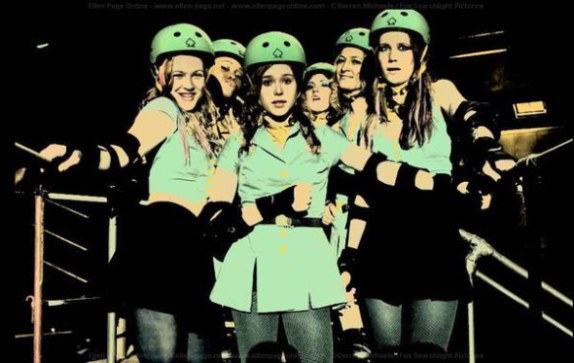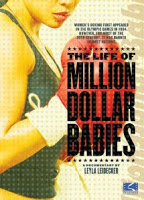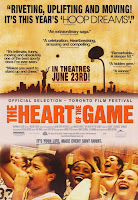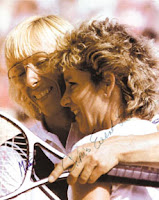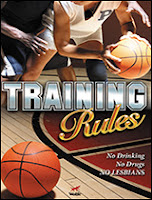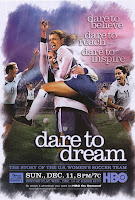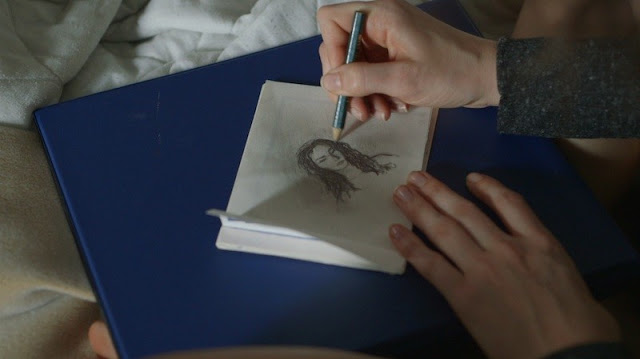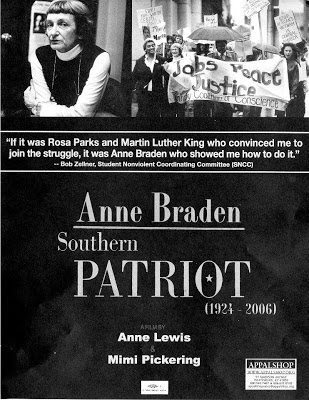 |
| The cast of Whip It! |
Whenever I meet a fellow skater, and they ask me how I got into roller derby, I get a little sheepish.
“I was in college and I saw Whip It!, and I decided I wanted to do that,” I say every time, hoping for a nonjudgmental reaction. Joining the sport post-Whip It! is not the coolest thing for a derby athlete to cop to. Unfortunately for me, my simple derby origin story is true. I walked into a movie theater expecting to see a frothy girl-power flick with my friend, and I did—but I also walked out figuring starter skates into my college budget. For at least the first year and a half of my derby career, until I was well past the point of knowing better, I’d watch Whip It! the night before every bout while I painted my nails in my team colors and sipped on a healthy, nonalcoholic beverage. And while I know that Whip It! Is not the best roller derby film out there, when I sat down a few nights ago to re-watch it for the first time in over a year, I cried at the same parts that always made me weepy. I love Whip It!, but I’m a sucker for it.
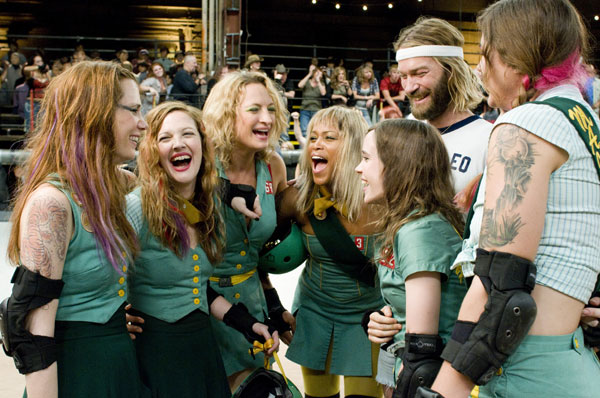 |
| The cast of Whip It! |
Whip It! Was Drew Barrymore’s directorial debut. Based on a young adult novel by Shauna Cross, the screenplay centers around a seventeen-year-old misfit named Bliss Cavendar (Ellen Page), who spends a lot of time screwing up at the beauty pageants her mom (Marcia Gay Harding) makes her do, until she discovers roller derby while on a shopping trip to Austin. Without permission from her mom or her sports-loving dad, Bliss lies about her age, joins the 21+ league, and becomes star jammer Babe Ruthless. Problems arise when she starts dating an indie rocker she meets at a bout, when she clashes with a member of an opposing team, and when her parents find out about her secret double life. While the plot is heavy on teen and sports movie cliches, it’s also generously sprinkled with esoteric cultural references and cameos. Jimmy Fallon has a minor role as Hot Tub Johnny Rockets, a perpetually hungover announcer who just wants to get laid, and Andrew Wilson (the elusive third Wilson brother!) faces off against opposing coach Har Mar Superstar. Many of the extras, skaters, and non-speaking roles are respected real-life derby skaters, including one of my coaches, who plays the deaf Manson Sister #1—hi, Krissy!
It barely broke even at the box office and drew mixed reviews. Mainstream critics were on point about the film’s predictability; however, their reviews lose credibility when they make uneducated comments about derby aspects of the film. For example, one critic questioned Page’s casting in the lead role, saying she seemed too small to play roller derby. Never mind the fact that Bliss is a jammer, a position traditionally (though certainly not always) assigned to small, agile skaters. More interesting criticism came from within the roller derby community. If you ask a skater about Whip It!, she’ll probably complain about the “Play #3” scene, when Wilson’s character fields a strategy combining an elbow and a 180-degree turn. In real-life regulation play, this move is grounds for immediate ejection from a bout.
 |
| Not okay. |
However, the biggest problem with Whip It! isn’t the punches and elbows—if you watch closely, you’ll notice that Barrymore’s Smashley Simpson is always ejected, anyway—it’s the erasure of certain people and philosophies that make roller derby unique among modern sports. No visibly queer characters are included in the film, which is unrealistic for a sport known for its LGBTQ superstars and being relatively trans-inclusive a few years before anyone had ever heard of Fallon Fox. The grown women who drive both the skating and business aspects of competitive roller derby are weirdly two-dimensional. A big reveal happens when Bliss learns that her team captain, Maggie Mayhem (Kristen Wiig), skips afterparties because she needs to be with her young son, and another occurs when league bully Iron Maven (Juliette Lewis) snarls that she’s earned her derby stardom at age thirty-six—but after that, the film lets those characters return to the background. A large part of the criticism Whip It! received from the roller derby community regarded the age of its protagonist. Roller derby is so transformative and special for women who find it in their 20s, 30s and 40s, the criticism goes. Why make teenage Bliss the heroine, when Maggie’s and Maven’s stories are much more compelling?
 |
| Juliette Lewis as Iron Maven in Whip It! |
This is where I begin to get soft on Whip It! When I started playing roller derby at twenty-one (not quite a grown-ass woman, to be fair), I became a teenager again. My body changed and I was hungry all the time. I worried about what to wear to practice. My new passion worried my mom, and I had to be a little bit sneaky to keep everybody happy. I had to make choices about relationships and priorities that I’d never had to make before. And I could think of nothing but roller derby: after class, I’d sit in my room ogling gear, watching and re-watching league promo videos. In class, I’d doodle pictures of skates and myself wearing a jammer star on my helmet. I felt about roller derby the way I felt about my crushes in middle and high school. Maybe it’s easier to translate that giddy feeling to non-skaters if you just make the main character a typical teenage girl who is still figuring things out.
Don’t give up on film depictions of roller derby if you’re less sentimental than I am. There are better representations of derby in film, but you have to go looking for them. Brutal Beauty, a documentary which follows Portland’s Rose City Rollers through their 2010 home and travel seasons, is a great introduction to the sport and is available for streaming on Netflix.
An upcoming documentary that promises to take a different approach to the topic of derby is Erica Tremblay’s The Vagine Regime, which will profile the titular pan-derby LGBTQ all-star team.
Finally, my current favorite roller derby film is Turner Van Ryn’s dialogue-free short film Skater 26, which follows San Francisco skater Chantilly Mace through the weekend leading up to a high-stakes home bout. It’s breathtaking to watch, and does an incredible job of quietly creating a detailed narrative out of what is still a niche subject. Best of all, it’s available in full on YouTube.
Personal reasons for loving Whip It! aside—I’ve sat in the penalty box on delicate technical fouls enough times to scoff at “Play #3”—I can detect the tense, rehearsed quality of a new skater in many of the actors’ jumps and sprints. Johnny Rockets’s announcing places a little too much emphasis on the fishnet stockings the players wear, a trope that still crops up in mainstream coverage of derby. The underwater sex scene is truly unnecessary–so unnecessary that I won’t link to it. I cringe when Page’s Bliss tells her mom to “stop shoving your psychotic idea of ’50s womanhood down my throat,” because who actually says that?
But right after that, she throws out her hands and says, “I am in love with this.” I believe you, Bliss. I just understand why a lot of us don’t. Fortunately, there are just enough film options out there for the derby-curious.
